Forgotten Vampire Movies By Legendary Directors

Some of the greatest cinematic masterpieces are vampire movies, many from directors who transcend genre. The Lost Boys (Joel Schumacher), Interview With The Vampire (Neil Jordan), Only Lovers Left Alive (Jim Jarmusch), What We Do in the Shadows (Taika Waititi), Thirst (Park Chan-wook), and Bram Stoker’s Dracula (Francis Ford Coppola) are all examples of great directors using vampire lore to express their ideas.
Yet, not all such attempts have stayed in the public eye: forgotten masterpieces, flawed gems, and ambitious misfires. Let’s look at five such movies, notable for their directors and how they subverted vampire dogma to their ends.
The Hunger: Sexy, Sexy (David Bowie) Vampires
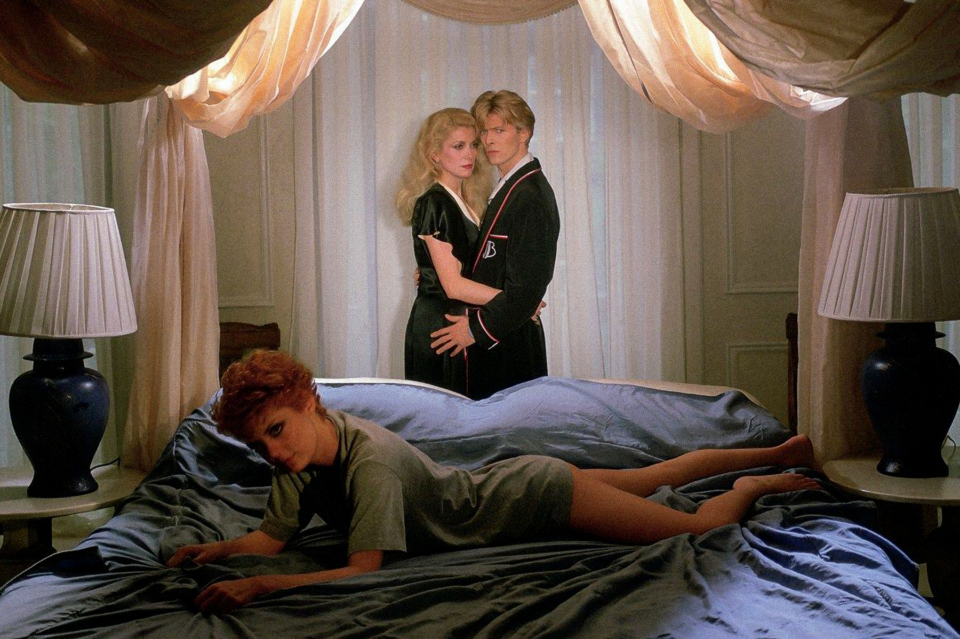
Vampires have been erotic creatures for a long time. Twenty years before Bram Stoker released the novel Dracula, Sheridan Le Fanu published the proto-lesbian vampire story Carmilla. A century later, Tony Scott would have a go at the sub-genre, loosely adapting Whitley Strieber’s novel, The Hunger.
It’s a surprise to discover Scott directed an erotic vampire thriller. He’s one of the directors who defined action blockbuster DNA with movies like Days Of Thunder, The Last Boy Scout, Beverly Hills Cop 2, and Top Gun. Yet, at the start of his film directing career, he was not interested in action. The Hunger, Scott’s feature debut, is very different from his other work.
The Hunger is about sexy, seductive vampires and the webs they weave. David Bowie stars as one of these vamps, yet he’s not even the sexiest immortal in this movie. A youthful Susan Sarandon reminds us why she is one of the great unconventional beauties of our era. Though forgotten today, the mysterious Catherine Deneuve as the main bloodsucker is the embodiment of vampire sexuality.
Queue some tasteful nudity, violence, and sexually-charged bloodletting. This is a vampire movie, but it never uses the word or explains their nature. Instead, The Hunger does what it wants: these vampires own coffins and suck blood, but sunlight does nothing to them, and they are prone to sudden and rapid aging (created with some impressive prosthetics).
It’s unlikely that Scott cared about vampires or wore a mesh vest under his button-ups. He saw an opportunity to create stylish moments involving beautiful people, dripping in a depressing gothic atmosphere. The Hunger seduces its audience with alluring visuals and beautiful people juxtaposed with danger and provocative moments; a not-so-subtle couture gothic thriller that opens brashly with Bauhaus singing “Bela Lugosi’s Dead”.
Yes, it can be a bit on the nose and self-indulgent. But The Hunger does sexy vampires better than most. Alas, critics disagreed and audiences didn’t care, banishing the movie into obscurity. Yet, in an apt example that you never know what may come from what you put out there, The Hunger had at least one big fan, movie producer Don Simpson, who then hired Tony Scott to direct a film about a bunch of fighter pilots.
Lifeforce: Mesmerized (By Space Vampires)
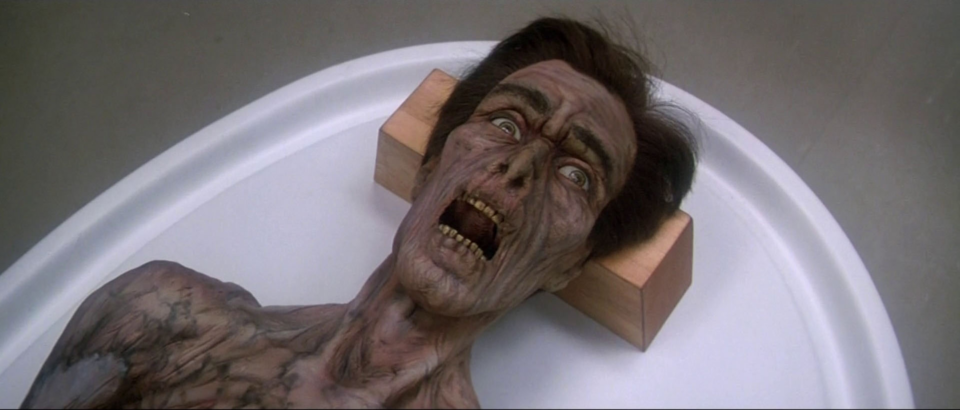
Maybe it’s not that surprising that sexy vampires have been a popular culture trope since the Victorian era. Vampires are already dangerous due to their great strength and supernatural powers. But often, all they need to do is make eye contact. A vampire’s gaze and charismatic influence are its most potent weapons, able to mesmerize someone from across a room and invade their mind.
Many vampire movies have used this power to some degree. But Tobe Hooper’s Lifeforce goes for the franchise.
Lifeforce is not very good. Let’s get that out of the way. It was made after Poltergeist and for twice the budget, but it’s not in the same league. The film lacks enough focus and tension to keep it afloat. It’s still entertaining and a hidden gem if you are fond of 1980s practical effects. Criticising Tobe Hooper on a horror site is risky, but Lifeforce is more Death Trap than Texas Chainsaw Massacre.
Still, it’s not awful, and Lifeforce has its fans. Plus, it’s from Tobe Hooper. Strictly speaking, this article features non-genre directors who have never made a vampire film. Hooper would be disqualified on both counts because he’s known for horror, and he directed the 1979 Salem’s Lot mini-series.
But he delivers vampires in space with more style and substance than the concept deserves and cranks mesmerization through the roof. Lifeforce is not a great film, but it would have been awful if someone else tried.
The movie is literally about space vampires. Based on the book The Space Vampires, astronauts discover a derelict alien ship that contains three naked humans. The bodies find their way to Earth, resulting in a perpetually nude Mathilda May hypnotizing and seducing (and occasionally electrocuting) anyone who crosses her path. These vampires suck out energy (aka life force), and their victims turn into husky zombies who crave human souls. The film uses these terms interchangeably, but it doesn’t matter. They are soul-suckers.
Does that make them vampires? No, but they arrive in glass coffins, you kill them with a stake through the abdomen, and their species is some kind of giant space bat. These are vampires. One actor even calls it out. And they are expert mesmerizers, never illustrated better than when an animatronic zombie seduces his autopsy doctor.
Lifeforce takes itself a bit too seriously, which hobbles its ambition and amplifies its many plot and character problems. Some actors seem barely present and others go overboard. It’s a convoluted thriller that clumsily grabs at vampire lore to fill the gaps. But at least we get an undisputed champ of vampire mesmerization with creatures that can seduce at a glance and overpower their victims with sexual vibes. Hey, maybe the Twilight vampires are also from space…
Nosferatu The Vampyre: Tortured Romantics (and Torture By Klaus Kinski)
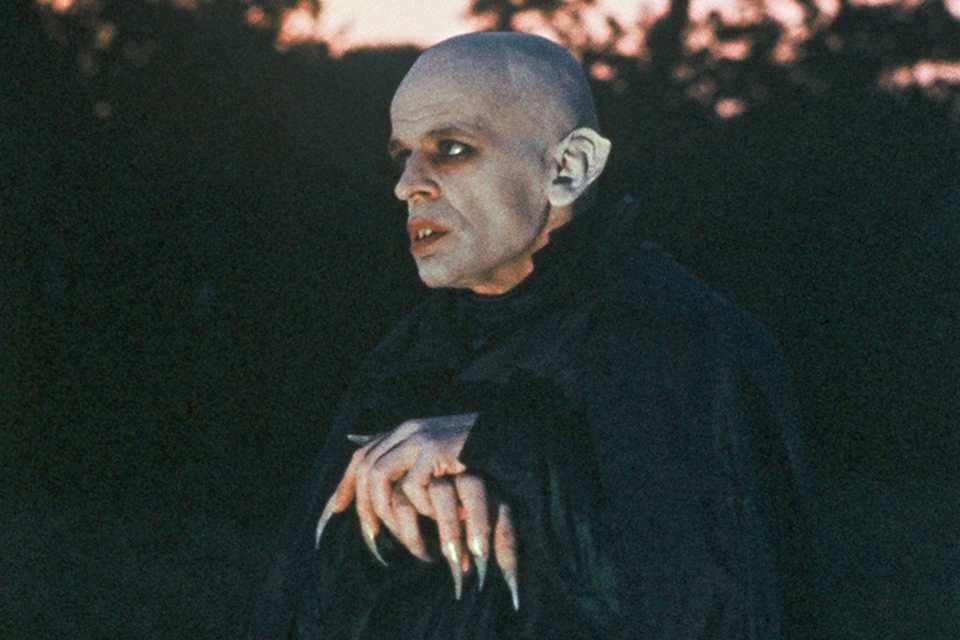
Most vampire characters are tortured romantics who yearn for the humanity and love they lost. This theme was less common in earlier vampire fiction. The creature in the first modern vampire tale, The Vampyre, is manipulative and psychotic. Dracula‘s origins are unknown in the novel and have nothing to do with the victims he stalks. Still, the tragic vampire quickly caught root and was already bouncing around by the early 20th century.
Werner Herzog has a thing for tragic figures, more recently as the subjects of his captivating documentary films. But he’s also an accomplished feature filmmaker and had made well over a dozen of them when he directed 1979’s Nosferatu The Vampyre. Herzog doesn’t like Bram Stoker’s novel. Instead, he sought to connect with the early masters of German cinema and selected F. W. Murnau’s almost-lost Nosferatu.
Nosferatu shouldn’t exist. It infamously tried to avoid paying for the rights to Stoker’s story but was still sued into oblivion. Yet like its immortal villain, the film did not die and some of its scenes are still iconic today, a century later. The old, creepy vampire in 2014’s What We Do In The Shadows—that’s Nosferatu.
Herzog didn’t care about vampires, but he did want to link with what some regard as Murnau’s greatest achievement. The results are astonishing, if a little overbearing.
Herzog remade a silent film but added two generations of cinematic progress. He tips his hat to Murnau’s framing and lighting yet also makes space for new ideas. He respects Nosferatu‘s story, which removes or merges several characters and scenes from the novel. Still, Herzog makes new plot changes and even restores the original character names Murnau changed to dodge copyright.
And then there’s Klaus Kinski. Isabelle Yasmina and the rest of the cast deserve great credit for their work and also for tolerating someone whom Herzog has called “a great pestilence” (and he was Kinski’s friend). But it’s genius actor and awful human being Kinski who nails this production. Any other remake would have tried to improve Nosferatu‘s bizarre, impractical, and ridiculous vampire design. Yet, Nosferatu The Vampyre stubbornly sticks to that look, and Kinski makes it work, delivering a vampire that flows between grotesque and utterly creepy to bizarrely vulnerable.
There are better portrayals of vampires mourning their lost humanity. Nosferatu The Vampyre also has flaws, especially the more surreal third act. But Herzog’s film accomplishes the tortured romantic theme with a very unlikely vampire in a very unlikely remake without losing any of Dracula’s bestiality. Best appreciated if watched back-to-back with Nosferatu.
John Carpenter’s Vampires: Demonic Animals (But Still 90s Chic)
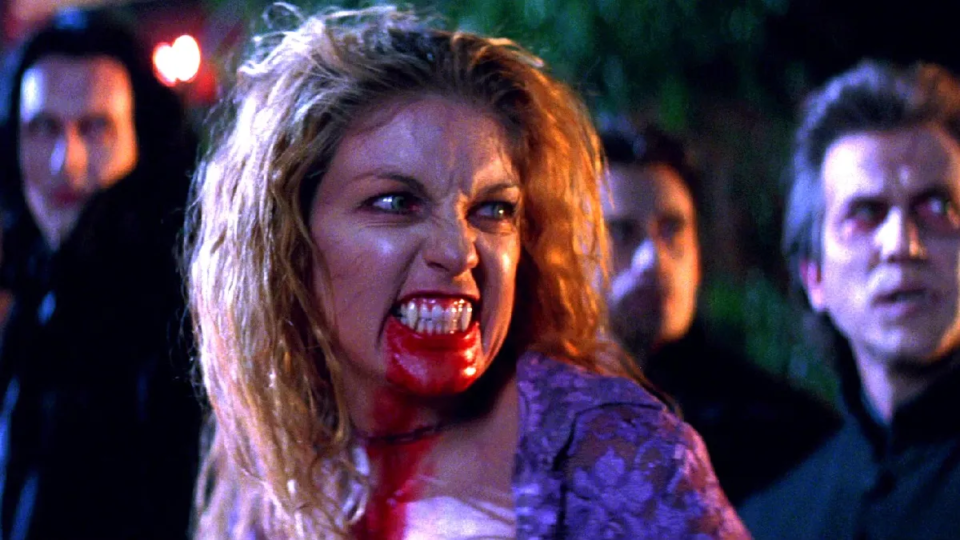
Your average vampire tends to have impressive powers. But can any of them maintain a good-looking black trench coat, even though they just emerged from the ground like a Living Dead extra? The vampires in John Carpenter’s Vampires can. It’s never explained, but this is not a movie that’s big on explanations. Just buckle up, and bring your stake.
These vampires are bestial to a fault. Today, we’re climatized to snarling vampires with clawed hands, but they were a novelty in the Nineties. The iconic From Dusk Till Dawn set the tone, no doubt prompting someone to get the rights to the novel Vampire$ and offer it to the legendary John Carpenter.
Carpenter’s Vampires is an action film where the vampires are beyond any character development salvation. Carpenter had a clear vision: enough of vampires as the tragic figures.
There are no coffins or frilly shirts. Sunlight, stakes, and decapitations still kill the bloodsuckers, but they don’t own gothic castles or host midnight soirées with sleepwalking maidens. No, they punch their claws into Mark Boone Jr.’s chest and rip him in two. They appear to sleep burrowed underground (and sometimes in abandoned houses). How this works is never explained. But, like lead villain Thomas Ian Griffith’s trench coat, it looks cool.
That’s probably because Carpenter, like the other directors on this list, didn’t spare much thought for vampire lore. Instead, he had violent Westerns in mind, specifically the work of director Sam Peckinpah. The gritty desert setting and remote locations of small towns and forgotten monasteries provided the backdrop for modern cowboy James Woods, spitting venom after a master vampire annihilates his posse of vampire hunters.
In such circumstances, Carpenter doesn’t need sympathetic or tragic vampires, so he goes hard in the other direction. The results are mixed and predictable, but the kills are violent, and the monsters are ferocious. Apart from one scene that gives a nod to vampiric seduction, these creatures are feral. Vampires isn’t dull, which is how one can describe Carpenter’s good movies, and it is one of his better works from the Nineties—not far behind Into The Mouth of Madness and a contender with Ghosts of Mars as his most violent movie.
But John Carpenter’s Vampires wasn’t a hit, and the savage baddies didn’t resonate with audiences who were really into vampire chic (emphasizing how much of an unexpected event From Dusk Till Dawn was). Yet it’s still an entertaining popcorn film deserving some cult love. At least, some of its ideas carried on into films like Blade and, more recently, Day Shift.
Near Dark: The Outsiders (And Loving It)
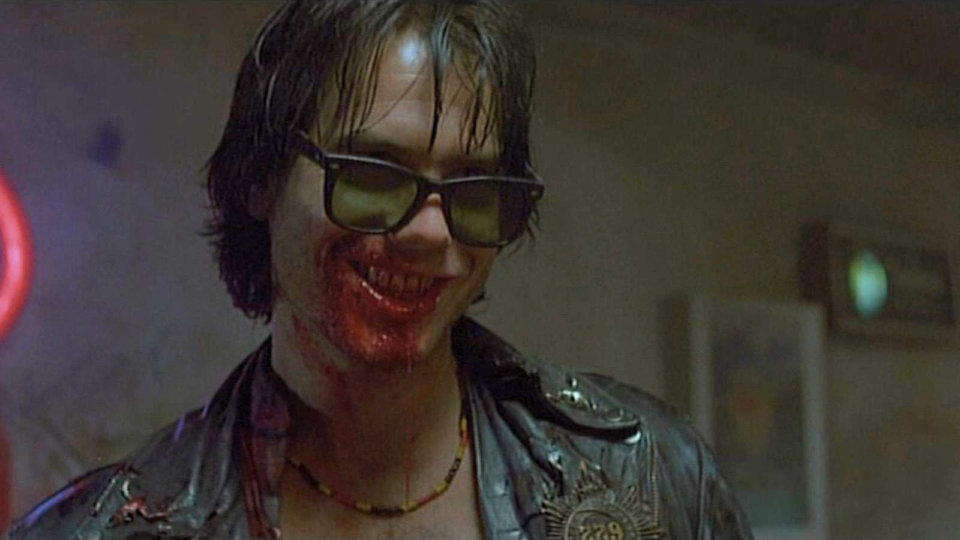
Our themes come back full circle with a movie about sexy but also very feral vampires, yearning for humanity yet hunting humans like cattle, and destroying what they seduce. And they’ve been to space—well, three of the actors had recently worked together on Aliens.
There, they portrayed the android, the emasculating marine badass, and the guy who screams, “Game over, man!” In Near Dark, they are a gang of vampires roaming the backroads of America and pouncing on victims. Their gang includes an old vampire stuck in a teenager’s body and a more recent inductee, a young woman. When Near Dark‘s protagonist, a cocky teenage womanizer, runs into her, he gets drawn into this hellish gang.
Near Dark is the second film by Kathryn Bigelow, known for intense and gritty thrillers like The Hurt Locker, Point Break, and Zero Dark Thirty. Much like Carpenter, she also drew on Westerns of inspiration and cast into a modern road movie. It’s a stark and stripped-back film but with strong visuals and punctuated by excellent stunt work and special effects.
Bigelow has a knack for making visually compelling movies that aren’t too flashy, and strongly driven by characters and plot. Originally an avant-garde artist who attracted some minor celebrity, when the director turned to making movies, she could leave the visuals to her instinct and put her effort into the story elements. That’s one reason why Near Dark‘s characters are so diverse and fun.
Lance Henriksen is a cucumber-cool vampire, always at the edge of violence. Jenette Goldstein is his steely partner with a thing for thrill kills. Joshua John Miller is the tortured immortal trapped in a boy’s body. Jenny Wright is the sad vampire looking for love from the unfortunate Adrian Pasdar, the cowboy lothario. And Bill Paxton… man, Bill Paxton is unhinged.
His character, Severen, is one of the most delightful and mental vampires ever to grace movie screens. He owns every scene, buoyed by the solid chemistry with Henriksen and Goldstein. He screams the animalistic side of vampires but produces charisma on a dime, and revels in his power over mere mortals. Severen is every reason why we fear vampires.
Bigelow is not a horror director, and like the other directors here, she approaches vampirism as a vehicle and not a genre. The word ‘vampire’ never comes up in the movie and it introduces all the lore it needs through the story. You might even think this is just a mortal thrill-kill gang if it weren’t for their allergic reaction to sunlight and unapologetic bloodlust. The bar scene, in particular, is quite the display of vampire superiority.
Near Dark has its issues and could have done with a bit more runtime. The third act is rushed and contrived, undoing much of what the rest of the film puts together. But it’s still quite a ride and one of the best examples of top-league directors using vampirism to express their vision. Maybe Near Dark best explains why vampires have been a consistent part of pop culture. They are almost invariably interesting characters—loners and outsiders—and in this film, that matters more than anything else.
Categorized:Editorials
